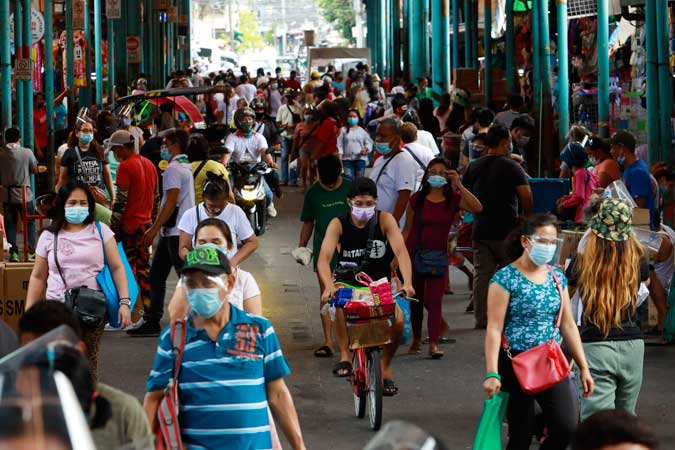THE PHILIPPINE economy likely remained in a recession in the first quarter, as domestic consumption continued to be sluggish amid the prolonged health crisis.
ING Bank N.V. Manila Senior Economist Nicholas Antonio T. Mapa said in a note on Thursday that first-quarter gross domestic product (GDP) may have contracted by 3.5%, much faster than the 0.7% slump recorded in the same period last year.
“Domestic consumption remains one of the key sectors of the economy (roughly 70% of total GDP) and we expect this sector to have been challenged at the start of the year. High levels of both unemployment and underemployment translate to depressed consumption all the more compounded as inflation rose to 4.5% in the period,” Mr. Mapa said.
For the second quarter, Mr. Mapa said a year-on-year growth is highly likely because of low base effect, when the economy shrank by 16.9% in the same period last year when the capital region was placed under the strictest form of lockdown.
In a report, ANZ Research said the Philippines’ GDP likely shrank by 3.7% in the January to March period.
“With exports not recovering sufficiently and fiscal support volatile, overall GDP growth in the first quarter is likely to have disappointed yet again at -3.7% — this will mark a fifth consecutive quarter of contraction,” ANZ Research Chief Economist for Southeast Asia and India Sanjay Mathur and economist Rini Sen said.
Latest data from the Philippine Statistics Authority showed exports slid 3.6% to $10.83 billion in the January to February period.
ANZ Research said consumer and business sentiment were expectedly weighed down by rising coronavirus infections and the strict lockdown measures in Metro Manila and adjacent provinces.
On Thursday, the Health department reported 6,637 new COVID-19 cases in the country, bringing the number of active cases to 63,170. The numbers have fallen compared with previous weeks when new infections exceeded 10,000 a day, and active cases reached a peak of 203,710 on April 17.
“While cases have decreased and restrictions lifted, the fundamentals point to a fragile recovery at best, in 2021. Together with the fact that policy support will primarily come from the fiscal side for now, we are downgrading our full-year GDP growth forecast to 4.8% in 2021,” ANZ said.
ANZ’s latest outlook is significantly lower than the 7.1% forecast it previously gave. It is also below the government’s 6.5% to 7.5% target for 2021 following the record 9.6% contraction last year.
Mr. Mathur and Ms. Sen warned that the Philippines may be a laggard in terms of recovery in the region, as consumption remains lackluster.
“Elevated ‘unemployment’ and ‘underemployment,’ combined with tight credit standards of banks, are having a detrimental impact on consumption,” ANZ Research said.
First-quarter GDP data will be released on May 11. — Luz Wendy T. Noble and Beatrice M. Laforga

